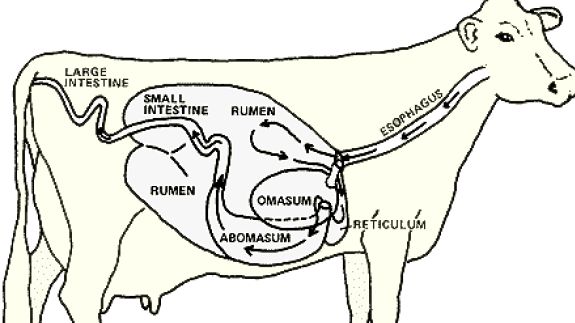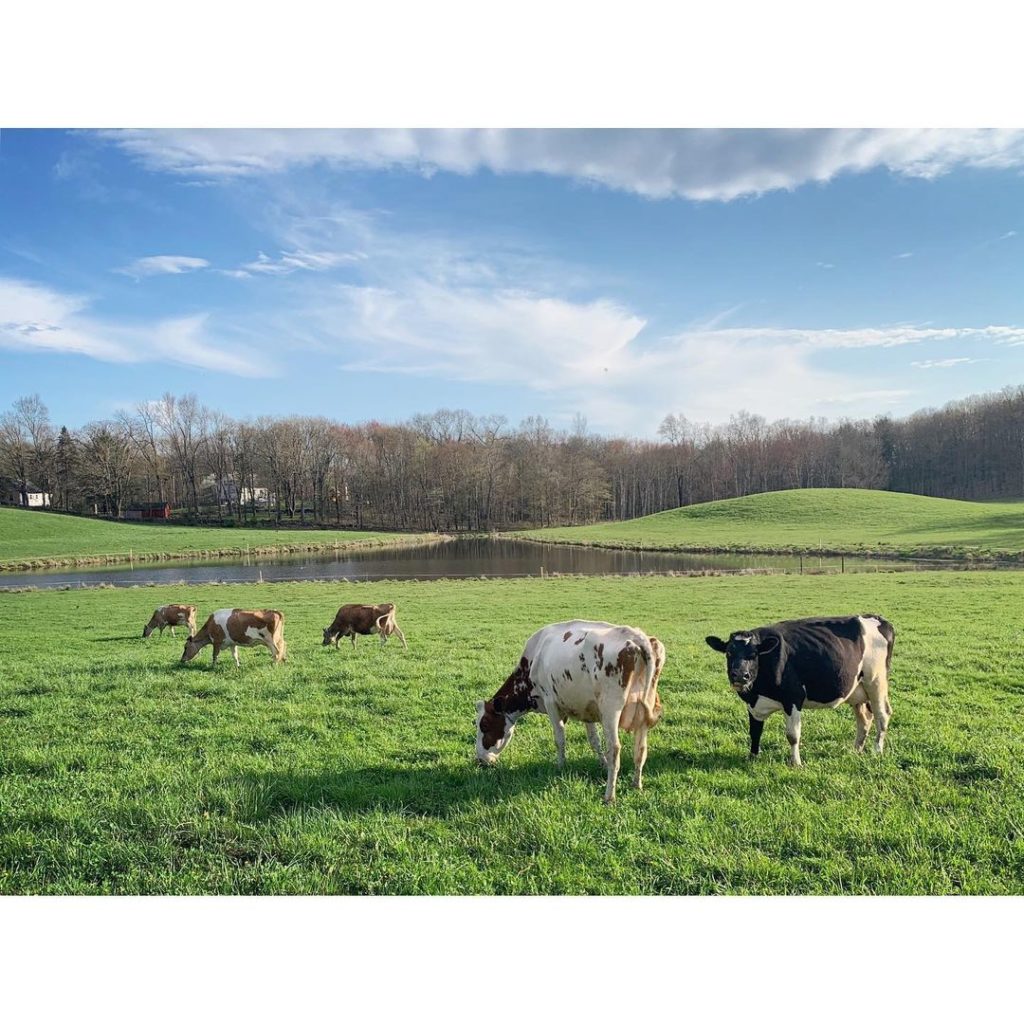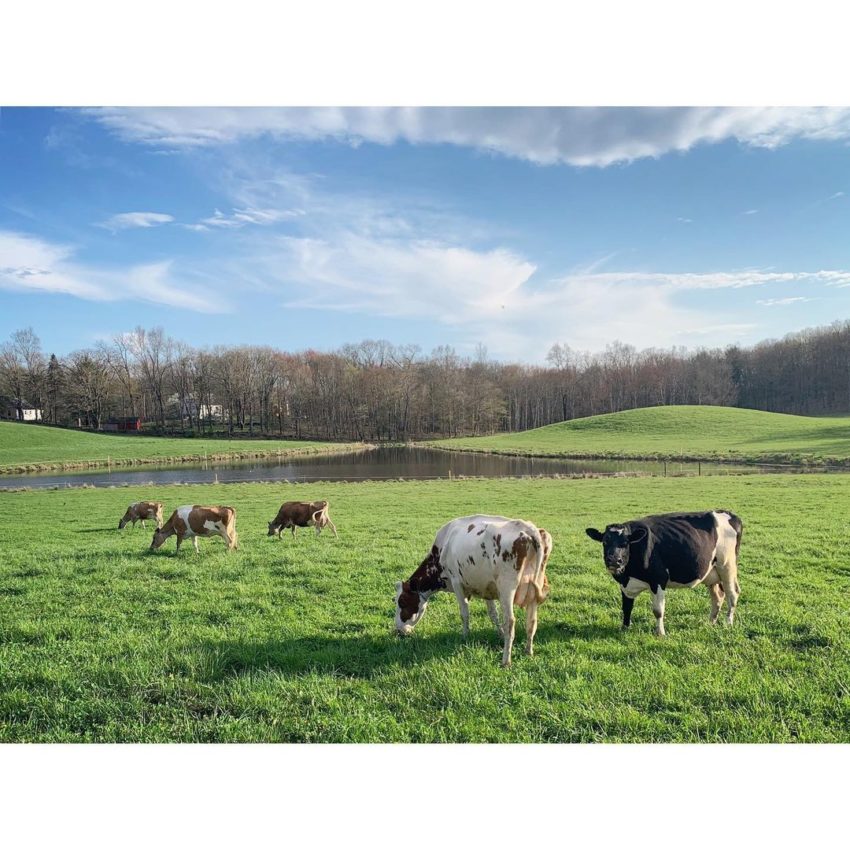Cows are amazing animals, the more we learn about them the more interesting they are. One of the most wondrous things about cows is their natural ability and biology which helps them act as one of the most efficient recycling machines in the world! Cows have the ability to turn somewhat useless products into one of the most nutrient dense foods in the world- milk!
Unlike other recyclers, cows are alive. They are living breathing animals with instincts and knowledge. They move about on their own and they generally know what is safe and what is not. Of course this means that they need to eat, which is their specialty after all- cows spend up to 6 or even 8 hours a day eating! Cows are naturally grazing animals, we can turn them out onto pasture and they will be happy just about anywhere. This means that hilly or mountainous land that is not good for anything else, can be a great food source for cows! Not only that, but grass is not used for much of anything, it is not harvested to sell like lumber or to build with like stone and steel and iron. So what can we do with it? Feed it to cows! Cows eat grasses and lots of other foods that are not wanted by humans for different reasons such as too difficult to digest, too old, or they are a by-product of something we make for ourselves.
Cows are ruminants, which means that they have 4 stomach compartments that each function a little differently to help digest tough foods. The first compartment is huge, it’s called the rumen, but it’s sometimes referred to as the fermentation vat because it is packed with little bugs called microbes that digest tough foods like fiber filled grass and hay. This is the most important part of what allows cows to eat what they do. The rumen will hold food for up to 27 hours, giving the bugs lots of time to chew through particularly tough things, before the food is pushed into the next compartment and so on until it is either fully digested and absorbed by the cow, or it is pooped out.

So other than grass, what do cows eat? Soybean hulls, almond hulls, shredded beets from the molasses industry, old bakery products, expired candy, fruit pulp and shreds from juice makers, and lots of other different things that nobody else wants. In the 2019-2020 crop year, California produced a hefty 2.550 billion lbs of almonds. That’s a lot of nuts, but what a lot of people don’t see is that all of those nuts come wrapped in a little package called a hull. In the same crop year, California had 4.031 billion lbs of hulls from the almonds (1). Most of those hulls went to large dairy farms and were fed to cows, or were used as bedding and mixed into manure that would be composted and used for fertilizer later. This allows the nutrients to flow through a biological cycle (digestion) and become useful again in the form of milk.
This is just one example of the important role of recycling that cows do, but you can imagine how many orange peels and pulp are left after making enough orange juice to feed us Americans breakfast for a year, or how many soybeans have been hulled to make oil, tofu, soymilk, etc.
Thank you for reading, and I hope you too are a little more appreciative of how wondrous cows can be!

Source used for almond production:
https://www.almonds.com/sites/default/files/2020-12/2020%20Almond%20Almanac.pdf
